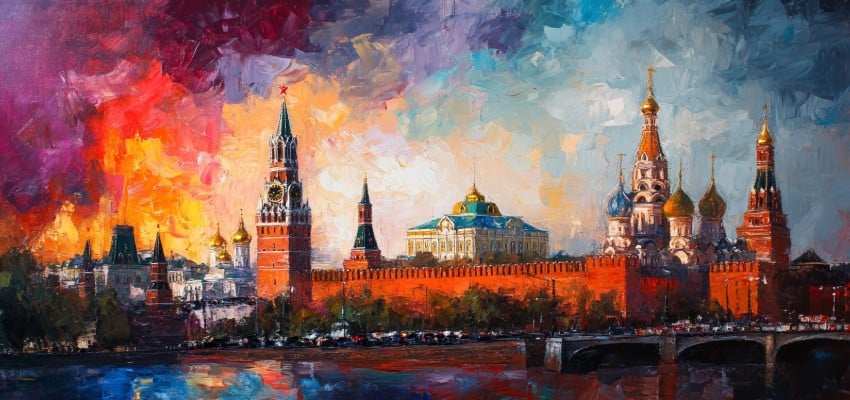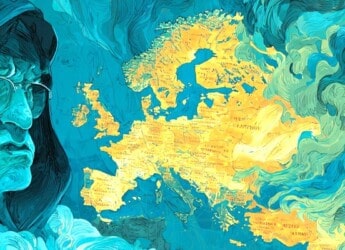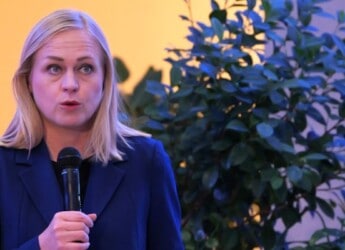Editor’s Note: This concise summary examines critical developments in Russia’s ongoing war against Ukraine, drawing from the latest assessment by the Institute for the Study of War. As the year comes to a close, understanding the evolving dynamics of this conflict becomes ever more essential. The narrative highlights key military, political, and geopolitical shifts that are shaping the course of the war and influencing global security. From Russia’s rejection of peace initiatives and Ukraine’s innovative defenses to Azerbaijan’s diplomatic challenge and Ukraine’s energy independence milestone, these updates provide crucial insights into the conflict’s wide-ranging implications. By offering a detailed and factual analysis, this article aims to inform readers about the multifaceted nature of the war as both sides prepare for what promises to be a decisive period ahead.
For those seeking to grasp the full scope of this evolving landscape, the complete updates from the Institute for the Study of War serve as an invaluable resource.
Content Assessment: Putin’s Extremism Strategy: New Justifications for War in Ukraine
Information - 94%
Insight - 92%
Relevance - 91%
Objectivity - 94%
Authority - 95%
93%
Excellent
A short percentage-based assessment of the qualitative benefit expressed as a percentage of positive reception of the recent article from ComplexDiscovery OÜ titled, "Putin’s Extremism Strategy: New Justifications for War in Ukraine."
Background Note: ComplexDiscovery’s staff offers distinctive perspectives on the Russo-Ukrainian war and Middle Eastern conflicts, informed by military experience on the West German, East German, and Czechoslovakian border during the Cold War and in Sinai as part of Camp David Accord compliance activities. This firsthand regional knowledge has been further enhanced by recent staff travels to Eastern European countries, including Estonia, Finland, Latvia, Lithuania, and Poland. These visits have provided up-to-date, on-the-ground insights into the current geopolitical climate in regions directly impacted by the ongoing conflict.
Combined with cybersecurity, information governance, and eDiscovery proficiency, this multifaceted experience enables comprehensive analysis of these conflicts, including the critical impact of cyber warfare, disinformation, and digital forensics on modern military engagements. This unique background positions ComplexDiscovery to provide valuable insights for conflict-related investigations and litigation, where understanding the interplay of technology, data, and geopolitical factors is crucial.
Russo-Ukrainian Conflict Update*
Putin’s Extremism Strategy: New Justifications for War in Ukraine
ComplexDiscovery Staff
On December 29, 2024, the conflict in Ukraine remained a focal point of international attention, underscored by developments both on the battlefield and in the corridors of diplomacy. Russian Foreign Minister Sergei Lavrov issued a definitive rejection of two proposals reportedly put forward by U.S. President-elect Donald Trump’s team earlier in November. These proposals, which included delaying Ukraine’s NATO membership by 20 years and deploying European peacekeepers in Ukraine, were dismissed by Lavrov as insufficient and unsatisfactory. The Kremlin’s stance remains rooted in demands that have persisted since late 2021: Ukraine’s permanent neutrality, the imposition of strict limits on its military capabilities, and the removal of its current government. Lavrov’s rhetoric highlighted what Russia alleges are the root causes of the war—NATO’s so-called eastward expansion and Ukraine’s purported discrimination against Russian-speaking populations. These assertions, echoed by President Vladimir Putin, form the basis of Russia’s refusal to compromise, signaling the enduring intractability of peace negotiations.
Putin reinforced his ideological narrative by enshrining the concept of Ukrainian “denazification” into a newly unveiled 2024 Strategy for Countering Extremism. The strategy document identifies “Russophobia” and Ukraine’s promotion of what Moscow deems neo-Nazi ideologies as primary threats. It explicitly names Ukraine as a source of extremism and calls for its elimination. This updated framework aligns with Putin’s long-standing justifications for the invasion, framing the conflict as a crusade against extremism and a defense of Russian culture. By doubling down on this rhetoric, the Kremlin not only legitimizes its military objectives but also seeks to solidify support among Russia’s ultranationalist constituencies.
On the battlefield, Russian forces continued to press their offensives across multiple regions in Ukraine, though significant territorial gains remained elusive. In eastern Ukraine, the focus on Kharkiv Oblast and the Kupyansk-Svatove-Kreminna line underscored Moscow’s intent to regain strategic ground, but no confirmed advances were observed. The persistent assaults near Chasiv Yar and Toretsk in Donetsk Oblast saw localized progress, with Russian forces reported to have pushed forward in the Pokrovsk direction. Despite geolocated evidence suggesting some advances in the area, Ukraine’s defenses continued to slow Russia’s momentum. Further south, in Zaporizhia Oblast, Russian forces made marginal gains near Kamyanske, but Ukrainian resistance remained robust in sectors such as Orikhiv and Hulyaipole. Meanwhile, near Vuhledar, Russian operations were met with Ukrainian counterattacks, reflecting a dynamic battlefield characterized by incremental moves and entrenched resistance.
In Kharkiv Oblast, Ukrainian forces demonstrated remarkable innovation in countering Russian guided glide bomb strikes. Since early 2024, Russia has employed D-30 glide munitions with an extended range of up to 80 kilometers, launched from within its airspace. Ukrainian units have developed effective countermeasures, including the use of machine guns and electronic warfare systems to intercept and divert these munitions. The success of these measures, coupled with recent strikes on Russian ammunition depots, has reportedly constrained Russia’s ability to sustain its use of such weaponry. This adaptability underscores Ukraine’s ability to neutralize technological threats even in the face of a determined adversary.
Beyond the battlefield, the conflict continues to reverberate across the geopolitical landscape. Ukraine received its first shipment of liquefied natural gas (LNG) from the United States on December 27, marking a critical milestone in its quest for energy independence. The shipment, part of a long-term agreement with U.S. supplier Venture Global, reflects Kyiv’s ongoing efforts to counter Moscow’s weaponization of energy. This development comes as Ukraine prepares for the expiration of its gas transit contract with Russia at the end of the year, further underscoring the strategic importance of diversifying energy partnerships.
The war’s ripple effects extended beyond Ukraine, notably into the South Caucasus. Azerbaijani President Ilham Aliyev accused Russia of downing an Azerbaijan Airlines flight over Chechnya on December 25 and attempting to conceal its culpability. In a televised interview, Aliyev rejected Moscow’s explanations of a bird strike or gas cylinder explosion as causes of the crash, pointing instead to evidence of ground-based fire and interference from Russian electronic warfare systems. Aliyev’s demands for accountability, compensation, and punitive action against those responsible have introduced new tensions into Russia-Azerbaijan relations. Moscow’s tepid response, including a vague apology from Putin, has done little to assuage Azerbaijani grievances, further complicating Russia’s regional standing.
Meanwhile, systemic issues within Russia continue to affect its ability to sustain the war effort. Reports indicate that the country faces acute labor shortages, with a shortfall of 1.5 million workers attributed to demographic decline, military recruitment, and restrictive migration policies. These challenges are particularly pronounced in critical sectors such as construction and technology, where the workforce has been significantly depleted. Russia’s mobilization efforts have also extended to occupied territories, with thousands of Crimean residents reportedly conscripted since 2022. These practices highlight the Kremlin’s reliance on coercive measures to supplement its strained labor pool.
On the technological front, Russia is introducing new artillery systems and modernized drones to enhance its military capabilities. Recent reports suggest that Russian forces are deploying a wheeled self-propelled artillery system with an extended range, as well as upgraded versions of the Shahed-136 drone with improved targeting and resilience against electronic warfare. While these developments signal an effort to adapt to battlefield demands, they also reflect the logistical and resource challenges Moscow faces in sustaining its technological edge.
As the year draws to a close, the conflict shows no signs of abating. Russia’s entrenched political and military positions, coupled with Ukraine’s determined resistance and international support, suggest a protracted struggle. With the strategic, humanitarian, and geopolitical dimensions of the war continuing to evolve, the coming months will likely witness further intensification on all fronts.
News Sources
As a leading source for cybersecurity, information governance, and legal discovery insights, including international investigations and litigation, ComplexDiscovery OÜ recognizes the importance of awareness regarding alleged and documented criminal acts, particularly in the context of the Russia-Ukraine conflict. While we, following the lead of the Institute for the Study of War (ISW), do not provide detailed coverage of war crimes in our primary reports, we encourage professionals within the eDiscovery ecosystem to stay informed about these activities. This awareness is crucial for understanding potential future legal actions and responsibilities.
Detailed Reporting with Maps for December 29, 2024, from the ISW – Mouseover to Scroll
Russo-Ukrainian War - Control of Terrain - December 29, 2024Review the Detailed Reporting and Maps PDF
About the Institute for the Study of War Research Methodology
ISW’s research methodology relies on both primary and secondary sources, enabling researchers to develop a comprehensive understanding of the situation on the ground. In order to analyze military and political developments in any given area, ISW’s research analysts must wholly understand the systems of enemy and friendly forces. They must also understand the population demographics, physical terrain, politics, and history of that area. This lays the analytical foundation for understanding the reasons for particular developments and fulfilling their assigned research objectives. ISW analysts also spend time in places like Iraq, Afghanistan, and elsewhere in order to gain a better understanding of the security and political situation and to evaluate the implementation of current strategies and policies. Our researchers compile data and analyze trends, producing a granular analysis of developments in areas of research, producing an accurate, high-resolution, timely, and thorough picture of the situation. ISW’s research methodology guarantees its success and commitment to improving the nation’s ability to execute military operations, achieve strategic objectives, and respond to emerging problems that may require the use of American military power.
About the Institute for the Study of War
The Institute for the Study of War advances an informed understanding of military affairs through reliable research, trusted analysis, and innovative education. They are committed to improving the nation’s ability to execute military operations and respond to emerging threats in order to achieve U.S. strategic objectives. ISW is a non-partisan, non-profit, public policy research organization.
Learn more, get involved, and contribute today.
Additional Reading
- From Dissent to OSINT? Understanding, Influencing, and Protecting Roles, Reputation, and Revenue
- [Annual Update] International Cyber Law in Practice: Interactive Toolkit
- Data Embassies: Sovereignty, Security, and Continuity for Nation-States
Assisted by GAI and LLM Technologies
* Sourced and shared with direct express permission from the Institute for the Study of War (ISW).
Source: ComplexDiscovery OÜ



























